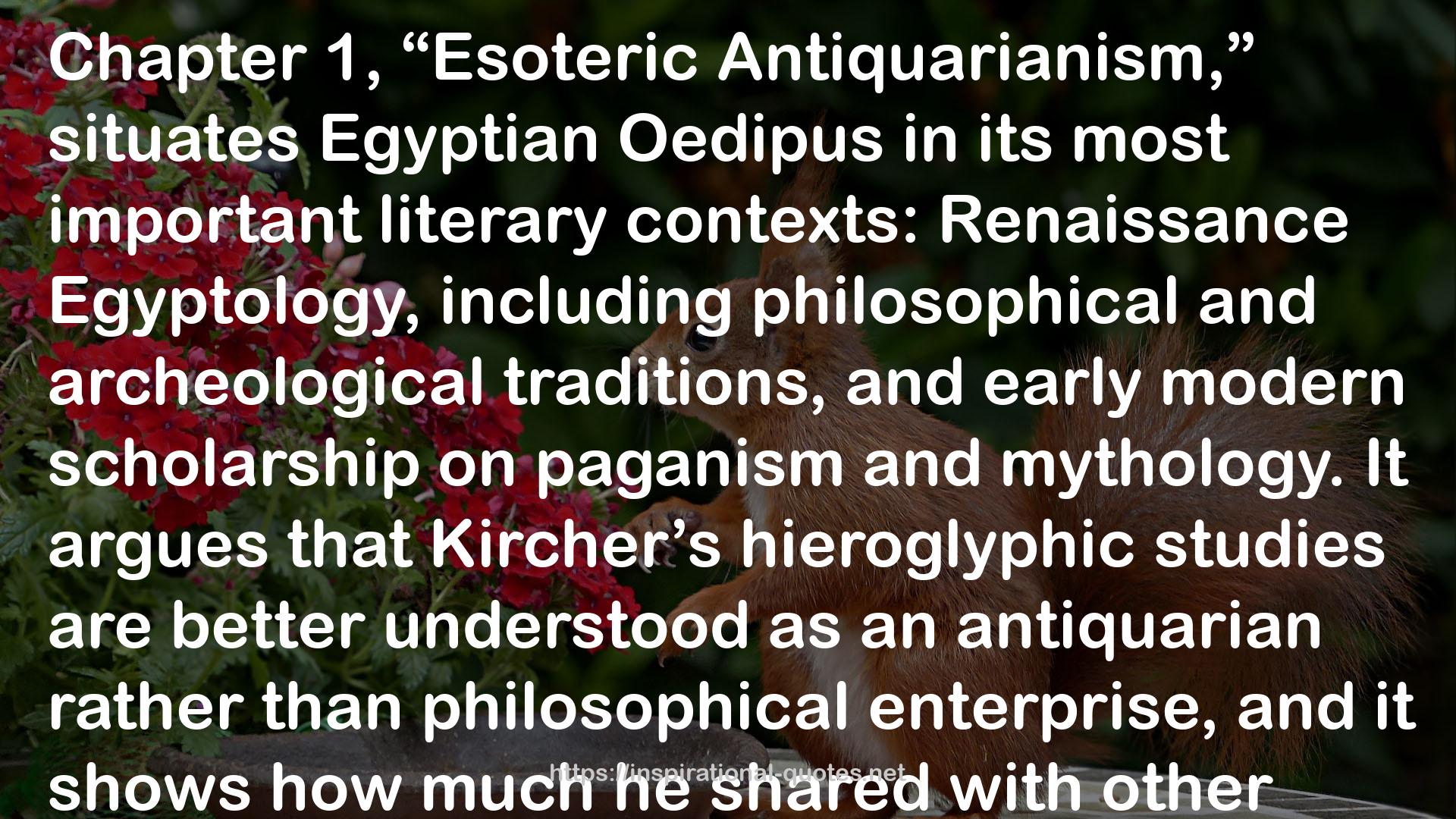Egyptian Oedipus: Athanasius Kircher and the Secrets of Antiquity QUOTES
1
" Chapter 1, “Esoteric Antiquarianism,” situates Egyptian Oedipus in its most important literary contexts: Renaissance Egyptology, including philosophical and archeological traditions, and early modern scholarship on paganism and mythology. It argues that Kircher’s hieroglyphic studies are better understood as an antiquarian rather than philosophical enterprise, and it shows how much he shared with other seventeenth-century scholars who used symbolism and allegory to explain ancient imagery. The next two chapters chronicle the evolution of Kircher’s hieroglyphic studies, including his pioneering publications on Coptic. Chapter 2, “How to Get Ahead in the Republic of Letters,” treats the period from 1632 until 1637 and tells the story of young Kircher’s decisive encounter with the arch-antiquary Peiresc, which revolved around the study of Arabic and Coptic manuscripts. Chapter 3, “Oedipus in Rome,” continues the narrative until 1655, emphasizing the networks and institutions, especially in Rome, that were essential to Kircher’s enterprise. Using correspondence and archival documents, this pair of chapters reconstructs the social world in which Kircher’s studies were conceived, executed, and consumed, showing how he forged his career by establishing a reputation as an Oriental philologist.
The next four chapters examine Egyptian Oedipus and Pamphilian Obelisk through a series of thematic case studies. Chapter 4, “Ancient Theology and the Antiquarian,” shows in detail how Kircher turned Renaissance occult philosophy, especially the doctrine of the prisca theologia, into a historical framework for explaining antiquities. Chapter 5, “The Discovery of Oriental Antiquity,” looks at his use of Oriental sources, focusing on Arabic texts related to Egypt and Hebrew kabbalistic literature. It provides an in-depth look at the modus operandi behind Kircher’s imposing edifice of erudition, which combined bogus and genuine learning. Chapter 6, “Erudition and Censorship,” draws on archival evidence to document how the pressures of ecclesiastical censorship shaped Kircher’s hieroglyphic studies. Readers curious about how Kircher actually produced his astonishing translations of hieroglyphic inscriptions will find a detailed discussion in chapter 7, “Symbolic Wisdom in an Age of Criticism,” which also examines his desperate effort to defend their reliability. This chapter brings into sharp focus the central irony of Kircher’s project: his unyielding antiquarian passion to explain hieroglyphic inscriptions and discover new historical sources led him to disregard the critical standards that defined erudite scholarship at its best. The book’s final chapter, “Oedipus at Large,” examines the reception of Kircher’s hieroglyphic studies through the eighteenth century in relation to changing ideas about the history of civilization. "

